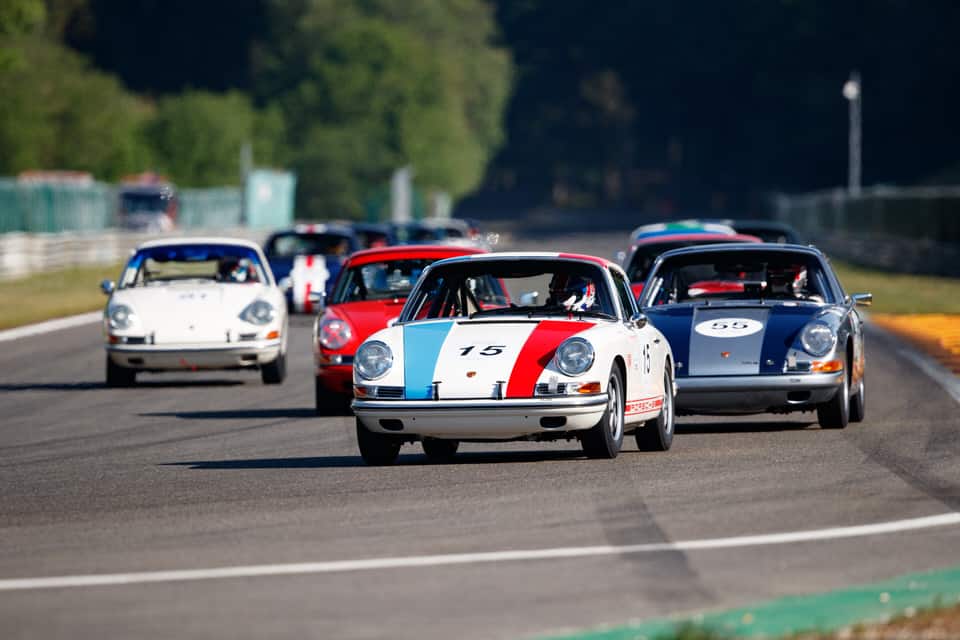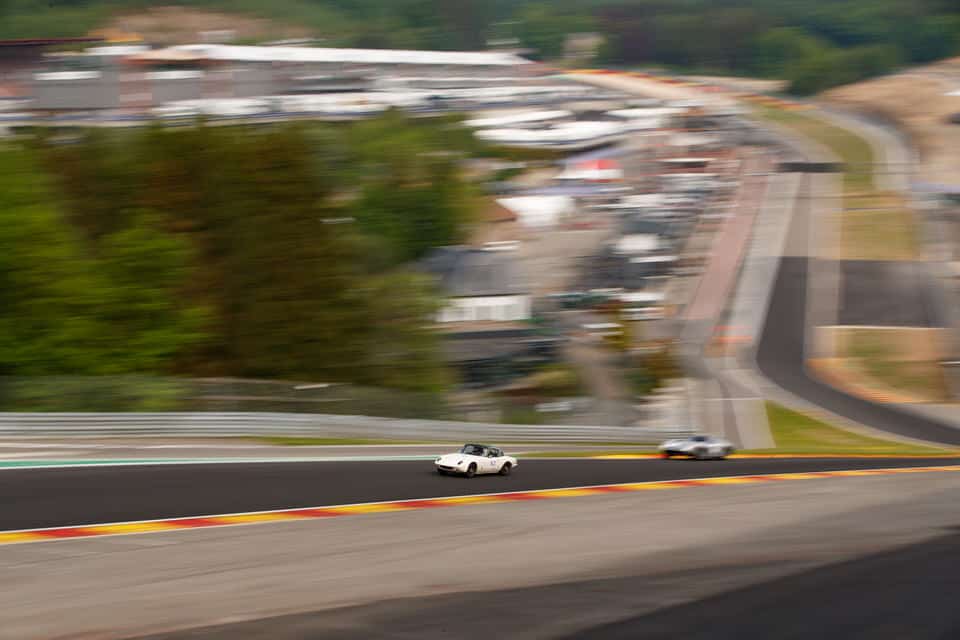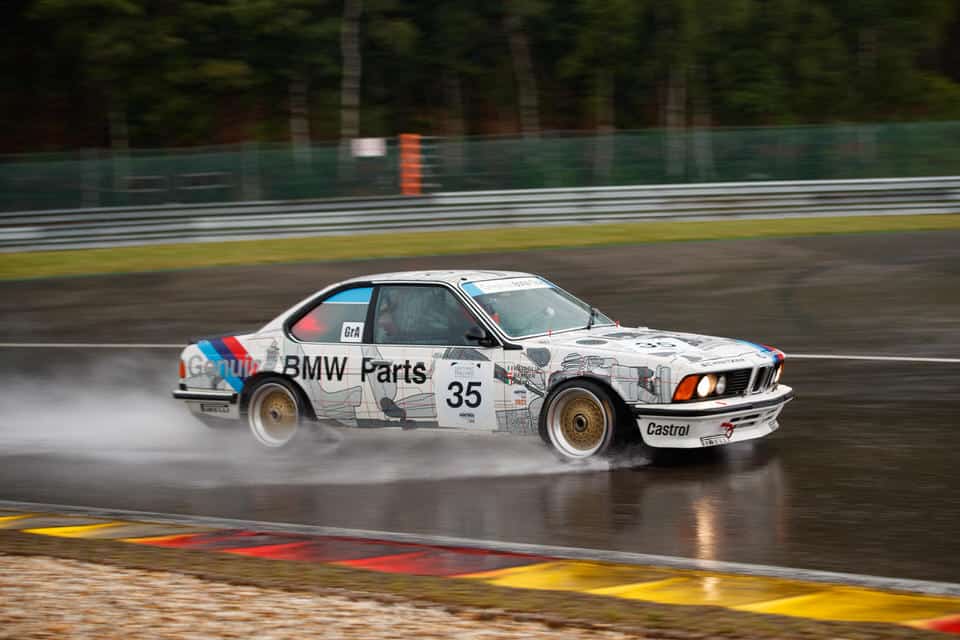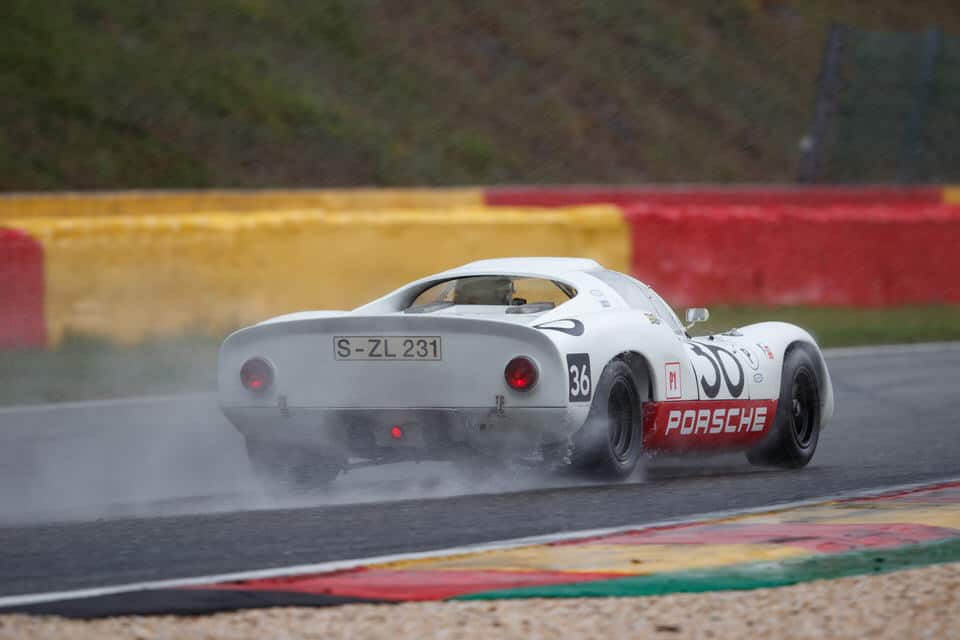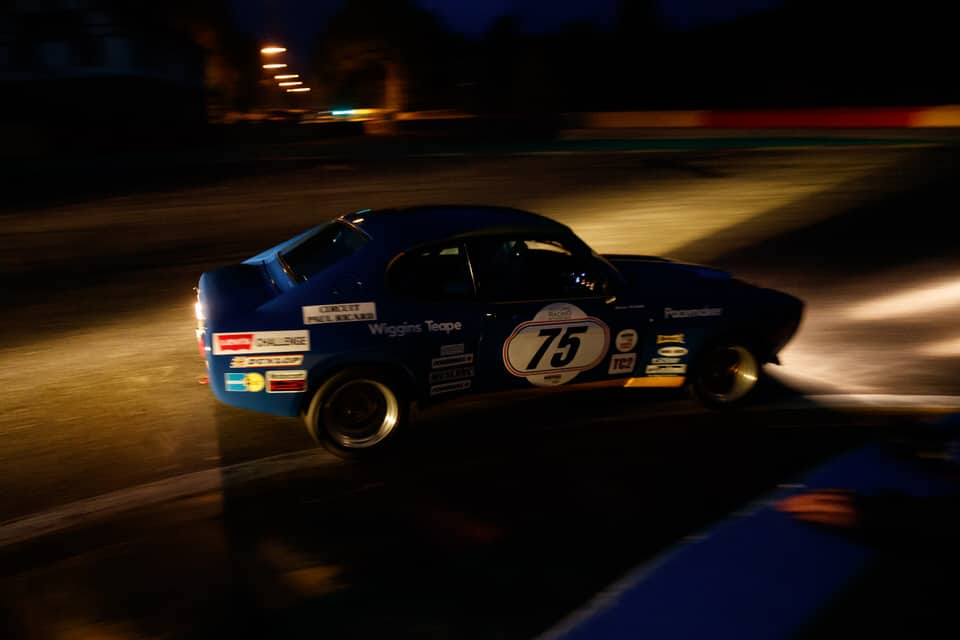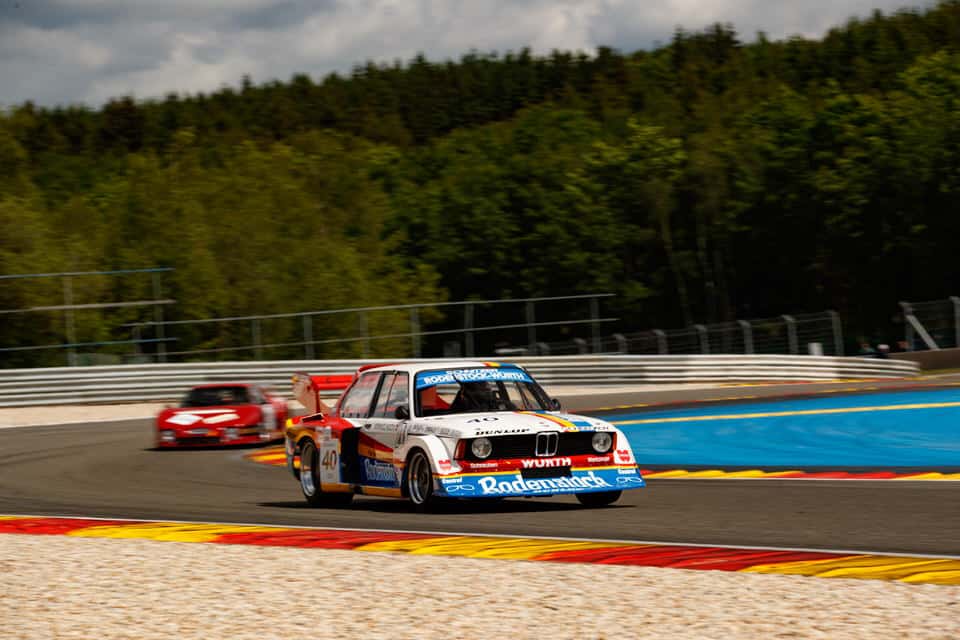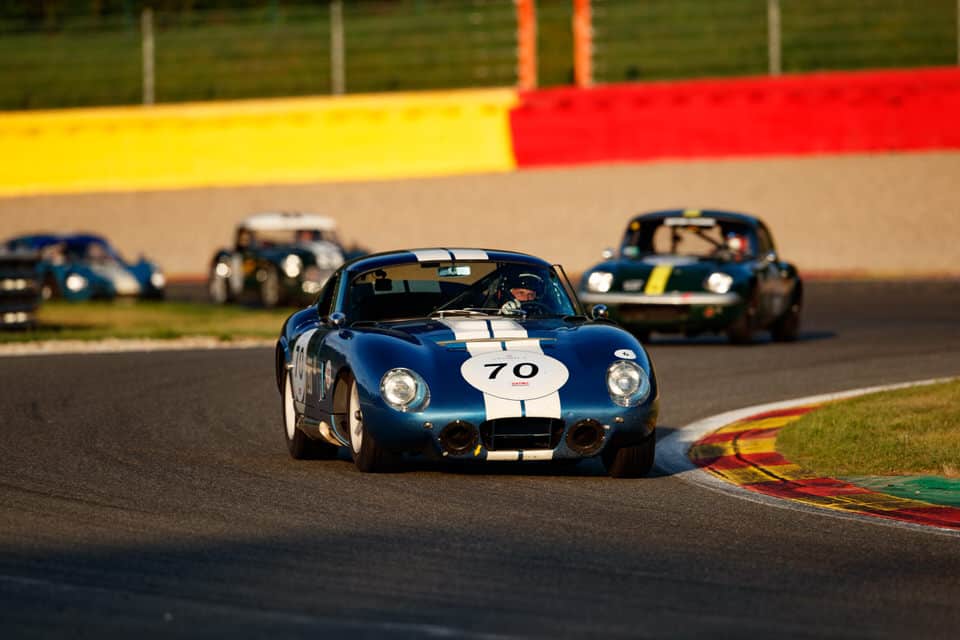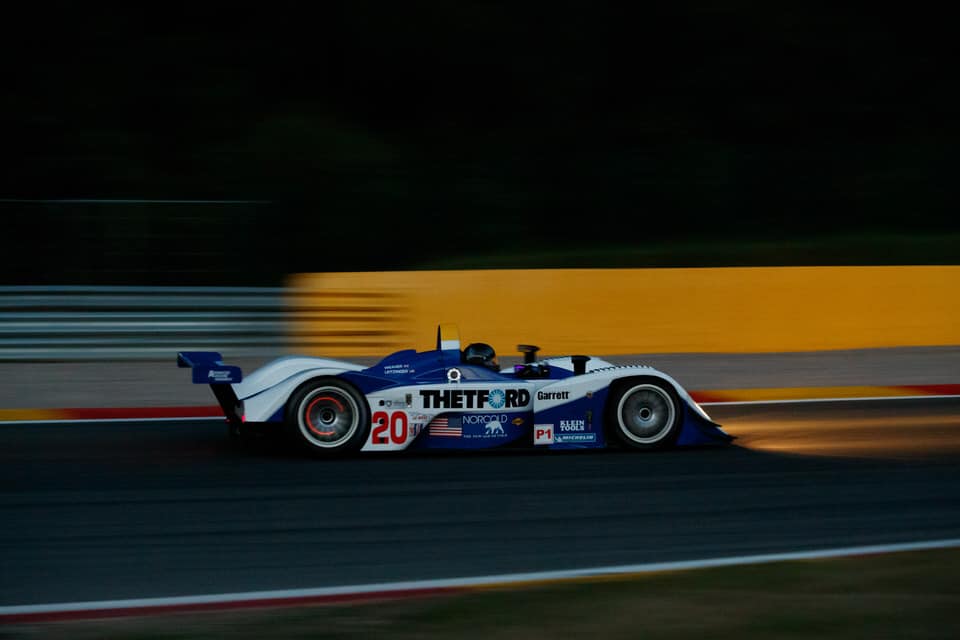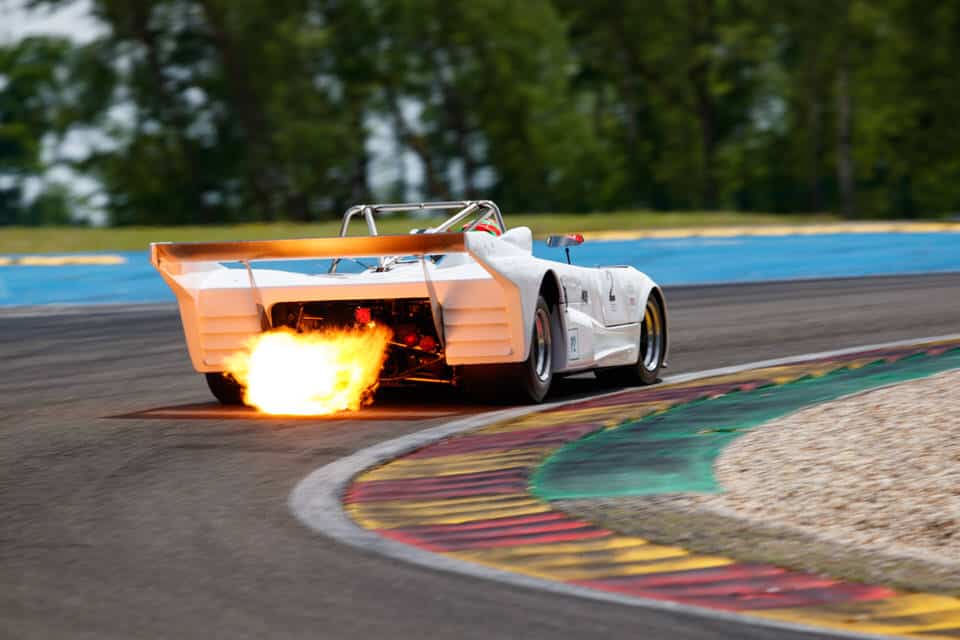Spa Classic – At Last!
Twice postponed, the tenth running on the historic circuit roared as usual
WORDS & IMAGES BY: WOUTER MELISSEN
The Circuit de Spa-Francorchamps is universally regarded as one of the world’s greatest racing venues. What sets the track apart is a combination of its challenging layout, rich history, and unpredictable weather. This year alone, “Spa” will host the FIA World Endurance Championship, the Formula 1 World Championship, and the Spa 24 Hours.
An annual celebration of the Belgian circuit’s sports car and touring car history is the Spa Classic, traditionally scheduled in May. It was due to be held for the tenth time in 2020, but the anniversary edition was postponed twice and only took place in May 2022. American racer David Danglard used this opportunity to race at Spa for the very first time. He said, “I have watched Formula 1 races since the mid ’70s and always dreamed to drive this track.”
First held in 2011, the Spa Classic has become a set fixture on the calendar of French organizers Peter Auto. Part of a five-race championship, its roster included all the familiar sports car and touring car fields that were also in action at Mugello a month earlier. Unique for the Spa Classic is an additional race for the Heritage Touring Cup (HTC) on Saturday. Run in complete darkness, this one-hour race is a nod to the period when the Spa 24 Hours was part of the European Touring Car Championship. New for this year’s edition was a forty-minute evening race for the Endurance Racing Legends field. This relatively new grid is open to the type of cars that competed at tracks like Le Mans, Daytona, and Sebring from the second half of the 1990s through the 2000s.
As part of an ambitious revitalization program for the circuit, much work was carried out on the site during the winter. “The first lap was completely weird, really strange, especially from the exit of La Source, driving down to Eau Rouge,” seasoned historic racer Sam Hancock recalled. “I did not like it at all on the first lap. I could not understand what they had done because it seemed like the circuit itself was identical, but just the surroundings were different. What I was shocked at, was how different that made the driving experience through those corners. After one lap, however you do not even notice it anymore.”
The changes that confused Hancock so much on his first lap back out included removing all of the grandstands on the lefthand side of the famous run from the hairpin first corner down to the bottom of the Raidillon, or Eau Rouge, corner back up the hill. This was done to allow for a little more run off and to open up the entry into Eau Rouge for safety reasons. With grandstands on one side and the pit wall on the other, this fast run downhill will have felt like driving through a tunnel. A new grandstand was built, but it was considerably farther back. Crucially at the top of Eau Rouge, a brand-new grandstand was also built to provide spectators with a great view over one of motorsport’s most famous corners.
“What was even more relevant was that the track surface has improved. It felt like they have resurfaced the whole track. The general feeling on my first and second lap was, wow; there is so much grip from this surface and it is so incredibly smooth.” Hancock continued: “Almost too smooth in my opinion. I am sure if you are in a Formula 1 car, you are very happy about that, but you do reduce some of the challenge. I may be old-fashioned but if we look a long way back through history, they were basically racing on dirt roads. So, at some point you have to ask, is the tail wagging the dog, or is the dog wagging the tail?”
The one stand-out corner is Eau Rouge, which was Danglard’s favorite section of track: “It is such a big challenge for the drivers.” Starting at the lowest point of the track, the track goes up steeply and then after a subtle left and right bend, goes over the crest with a blind left hander. Literally pushed into the track by the sudden rise, there are current race cars that can take the corner without lifting, but in historic racing cars drivers have to lift to navigate the challenging corner without incident. Hancock: “Eau Rouge is challenging but depending on what you are doing it in, not the necessarily the most rewarding.”
What Hancock enjoyed at Spa even more was the track’s rhythm: “I really enjoy Fagnes and then the following two or three corners. That is where there is rhythm, but there is also a lot of lap time to be made up. Normally you make up the lap time by not slowing the car as much as you initially think that you have to. This is a really interesting sort of voyage of discovery during the races. When you have many laps and many attempts to take the same corners, and you realize particularly in a car with slicks and downforce, just how fast you can take these corners.”
Spread over nine grids, there were a startling 380 competition cars on track during this, the tenth Spa Classic. Of these, no fewer than eighty-five lined up for the Sixties Endurance race on Saturday evening. This figure represents the absolute maximum number of 1950s and early 1960s sports cars the seven-kilometer track can handle. Normally, the two-hour Sixties Endurance races are the playground of Shelby Cobras but this time around, it was the Jaguar E-Type of Jon Minshaw and Phil Keen that had qualified fastest. The six-cylinder-engined machine held the lead early in the race but then had a smoky demise at the end of the long straight. This opened the door to an all-Cobra podium with Urs Beck and Ralf Kelleners taking the top step.
Even though the Sixties race did not end until 8:30 p.m., there were two further races on the schedule for Saturday; they were both run after sunset. Hancock on the particularities of racing in the dark: “It depends very much on the ambient lighting of the circuit and Spa is pretty good for ambient lighting. It is not on every corner, but it is quite rare that you feel like you cannot see anything.” What is also very important is the quality of the headlights, which can be a problem with historic racing cars: “That’s when you can find yourself in total darkness, which is not ideal.”
The first of the two night races was for the Endurance Racing Legends (ERL). It was actually already the second race for the group of the day, but it certainly was the most evocative. This generation of cars offered a great combination of glowing brake-discs and flame-spitting exhausts that made the race the most spectacular forty minutes of the weekend. No doubt appealing to a younger generation of fans, the bumper ERL field included a Bentley Speed 8, a choice of Porsche 911 variants, and also great examples of the Prodrive-built Ferrari 550 GTS Maranello and Aston Martin DBR9 GT-racers. Light or dark made little difference to Christian Gläsel as the German driver won both forty-minute races with his ex-Dyson Racing MG-Lola EX257.
The evening was concluded with the one-hour Heritage Touring Cup race. Just like in period, it was very much a BMW vs. Ford affair with Escorts, Capris, CSLs, 635s, and 2002s making up the majority of the field. Hancock also competed in this race, sharing an ex-works BMW 635 CSI Group A with its owner. They finished third in class in the night race but did not quite make it to the finish the following afternoon. At the sharp end of the field, both races were dominated by RS 3100 Ford Capris. Fitted with howling, four-cam V6 engines, these are formidably fast machines that have now also become very reliable. The night race was won by Yves Scemama, while Maxime Guenat took the victory the following day, both in Capris prepared by French specialists Equipe Europe.
At the Spa Classic, there were no fewer than seven Capri RS 3100s entered even though in period only three were built by the factory. Building new racing cars from existing shells has become common practice, particularly for touring car races. As long as they meet the period specifications, they are welcomed by organizers. At Spa, this practice also made its way to the Classic Endurance Racing 2 field for 1970s sports cars and prototypes. The entry list featured a Porsche 911 RSR Turbo that was freshly built, using the example in the factory museum as a mold. Similarly, there was a BMW 320i Group 5 that was constructed by a Belgian specialist from the original. He looked at producing a small run of facsimile. This is also the case with the Group 5 Capri freshly built by Zakspeed, who had also built the originals back in 1980. As it brings diversity to the grid, this is not necessarily a bad thing, as long as the cars continue to be honestly represented.
Of the nine grids that were out on track there were five that included Porsche 911s. They were found in all shapes and sizes, from the wild 911 GT2s and 935s to the very early short-wheelbase cars. For these a special ninety-minute race was created back in 2018 as part of the Porsche seventieth anniversary celebrations. It proved so popular that it has become a set fixture of the Peter Auto weekends. It is in this series that Danglard competes this year: “The 1965 short-wheelbase, the purest of all Porsche 911s is very challenging and super competitive. All cars have the same specifications making it a driver’s playground.” There were thirty-three virtually identical 911s on the grid with a mix of professional and gentlemen drivers. Taking victory were Andrew Smith and Oliver Bryant in their very early “901.” Danglard was an impressive tenth overall and third in the gentlemen driver’s class at his very first outing at Spa.
Racing at the Spa Classic lasted until 6:00 p.m. sharp on Sunday afternoon and saw many more great cars take to the track. There was a Porsche 917, a fleet of no fewer than four Silk Cut Jaguar Group C racers, and also a particularly wild 1980 Chevrolet Camaro IMSA racer that was prone to lifting the inside front wheel under full power. These were just some of the many highlights that made the tenth Spa Classic well worth the wait. As Hancock put it best: “Spa is special, always has been and always will be.”
